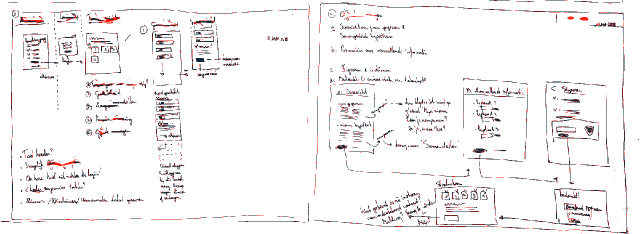Get a grip on the whole before diving into details

The architect designing a house does not start with choosing and arranging the furniture in the living room. Even if the client really wants that one specific large corner couch.
No matter how custom the eventual design, for each house there’s some basics that need to be taken care of. A way to enter it, some holes in it to let sunlight in, dedicated spaces for cooking, sleeping, washing up, etc.
Any tool or app that is not super small can easily be as complex as building a house.
Establish foundations first
Don’t get lost arranging details on a single screen if you’re not yet clear of the fundamentals. How can you enter? How many different types of rooms do you need? How are they connected?
Individual screens are easy to create in isolation but if you start there, you’ll have a hard time arranging them into a coherent structure. At the same time you’ll likely need a home screen, listings, detail pages, forms and the like. Establish the main paths, flows, scenarios as guides for stringing those basic page types together.
Get a grip on the full set of things that your new design needs to accomplish. It’s easy to get lost in polishing the details of a particular screen component when working in high resolution tools like Sketch. First establish that you need a list of items on this given screen because of some search or navigation action on a previous screen. Only later figure out the specifics of what to show for each item in the list.
Sitemaps and flows before wireframes. Pen and paper before digital. Not having an undo is not a bug but a feature. Redo instead of undo to get a grip on the whole.
Some resources
- Luke Wroblewski has an older talk about this: Parti & the design sandwich
- Page description diagrams are an old school, more text based version for creating the big picture
- Haven’t tried it but looks like Flowmap wants to provide that sweet spot between global (sitemap) and local (wireframes). (You should still start on paper though.)
- Think of your app like a collection of hubs and spokes
- You’ll probably need these types of pages